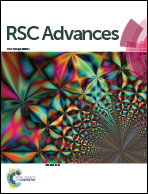Controlling hydrogen release from remaining-intact Clathrate hydrates by electromagnetic fields: molecular engineering via microsecond non-equilibrium molecular dynamics†
Abstract
In view of the recently-predicted hydrogen release from type-II (sII) clathrate hydrates in the general 140–180 K temperature range [J. Phys. Chem. C, 125, 8430–8439 (2021)], we have investigated in the present study, by means of microsecond-long non-equilibrium molecular-dynamics simulation, the effect of externally-applied electric fields (both static and alternating) on manipulating and accelerating this H2-escape process. In particular, we have found that judiciously-selected electromagnetic fields, in the microwave frequency range, serve to enhance dramatically this H2-release rate – crucially, without any breakup of the hydrate lattice itself. Of those studied, we have found that 10 GHz serves as the optimal frequency to maximise hydrogen release, owing to promotion of H2–H2 molecular collisions inside doubly-occupied 51264 cages in the sII structure and optimal field-period overlap with intra-cage tetrahedral-site hopping and opportunities for inter-cage passage via hexagonal cage faces. This study opens up the vista of “field engineering” for exquisite kinetic control of large, Grid-(terawatt hour)-scale hydrogen-storage systems.



 Please wait while we load your content...
Please wait while we load your content...